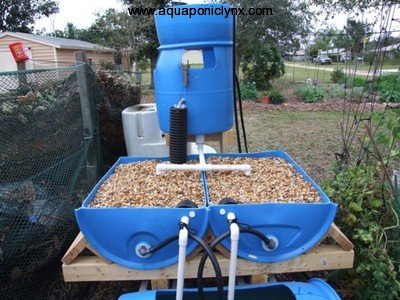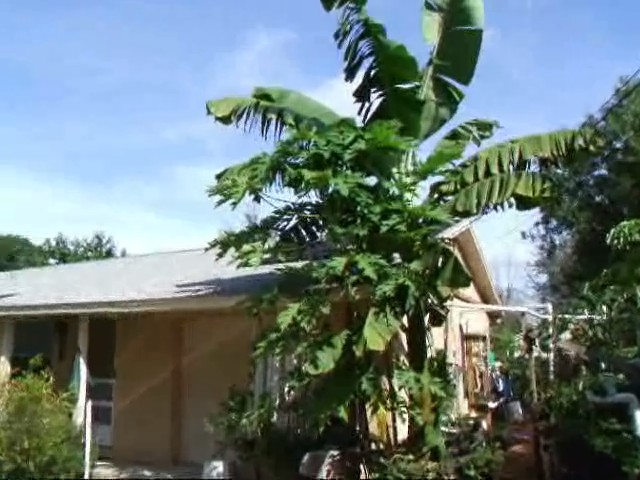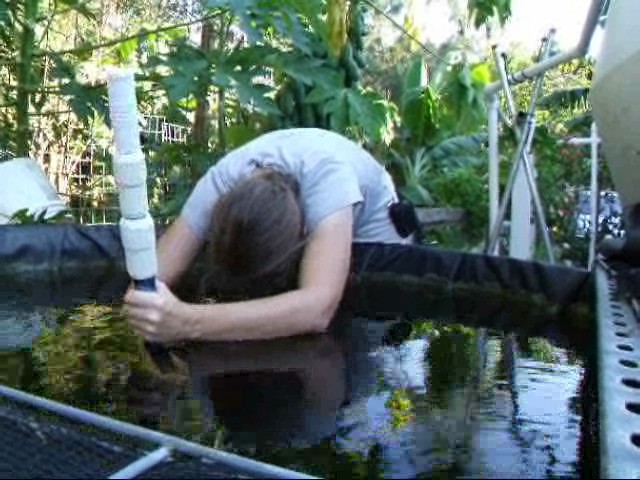This is not only an article to give some starting resources to learn about aquaponics but also as a reality check to cut down on the hype.
Many people stumble upon aquaponics but only have a very vague idea of what it is and how it works and they sometimes don’t even know how little they understand about it. Many people might just hear a description that sounds kinda like “oh it’s fish and plants and you can grow ten times the food in half the space in half the time for a 10th the water and there are not external inputs and it’s very sustainable.” Well that is all hype and not realistic but it sadly leaves some people thinking they could grow 100% of their family’s food in a 10′ by 10′ space or something crazy.
Plants still take space to grow, they still need light (if you don’t put it where the plants get sun, you will have to provide electric light and that is definitely a high level of external input.) You still have to feed the fish and add water and test the water and sometimes add stuff to provide missing elements. You also have to circulate the water which generally means some form of pumping. Aquaponics in not a miracle, it is just a nice automatically watered (as long as you keep it topped up and make sure pumps are working) automatically fertilized (as long as you feed your fish) method of gardening that can really appeal to the lazy gardener (after the system is set up) since it can be built to minimize bending and digging and weed problems. Aquaponics can be a great hobby for the tinkerer at heart and can provide education opportunities in biology, fish, plants, horticulture, chemistry, math, physics, hydrology, agriculture, engineering, food, where food comes from, different and interesting plants, for use as herbs, medicine, beauty, fiber, pest control and so much more.
There are some great YouTube videos out there but there are also plenty of videos showing someone constructing systems that I would venture to say could be of very questionable functionality. If they don’t show pictures of a similar system after it’s been in operation for several months then the system construction may or may not be functional. (FYI kiddie pools sitting on wooden pallets in Florida may not last even 6 months due to termites.)
Some people push aquaponics as a way to feed the world or make a living and offer 4 day or longer “commercial trainings”. I’m uncomfortable with the “commercial training” since many people seem to think they can go from knowing nothing about aquaponics, fish, plants, water or business and in 4 or 5 days manage to learn enough about ALL of it to be equipped to open a commercial farm. It is not possible to fit all the information required for that into a week even if the info was being pumped into people 24 hours a day. And even if that much into could be spilled out for people in that amount of time, most people can’t absorb the information that fast. These week long trainings may be really good trainings for intermediate aquaponics system operation but they can’t include enough economics, marketing, and business education to really support calling them “commercial” trainings. So, if you haven’t already been running an aquaponics system in your back yard, I don’t really recommend any of the 4-7 day trainings. I have been involved with a couple of these trainings and I think they were really good trainings but I did object to them being called “commercial” I teach plumbing and basic system layout/design and to really get detailed enough in that to really feel that I’ve given enough information and hands on training to people to let them build anything/everything they might think up, well I could probably spend 4 days doing just that and there is so much more to aquaponics if you want to make a business out of it. If a training tells you much in the way of business or marketing, they likely only have time to teach exactly how they are doing it in their location/market/climate etc because they are not going to have time to talk or answer questions about what would happen in a different situation. FYI you don’t make ANY money growing fish or veggies. It costs money to grow them. You can only make money when you sell them for more than it costs you to plant, grow, transplant, grow, tend, spray, harvest, process, package and transport and market them. DO NOT Go into DEBT based on some projection that so and so makes x amount per square foot or Y amount per year. If you go into debt to do it, are you going to be able to survive and make the payments for the first few years when under construction and when production is still no where near what it should be because you are still cycling, testing and learning what works in your climate? And then there is likely a stretch of time while you learn what your market will actually buy.
I hear many people who discover the idea of aquaponics and get all excited and start installing a backyard system with some vague plan that they will be able to retire on the income. The truth is a backyard system might provide a nice supplement to the household food supply (and thus have an economic impact) and perhaps even some extra to share with friends/family or maybe even sell a little, however, it is highly unlikely that the little that sells will pay for the operational costs, let alone provide for a household income. Backyard systems are not designed for commercial production. “A tomato plant or 6 sprawling in a waste high 4′ wide bed is not commercial tomato production.” It may be just fine for a home system to have plants sprawling and planted close together but it rarely lends well to selling the produce if you can’t inspect the plants easily to deal with pests, disease and damage. For home use a little pest damage may be of little consequence, bu it often kills the marketability.
A one or two day workshop or training seminar is appropriate to some one new to aquaponics. I think aquaponics can play a great roll in bringing food production home right in people’s back yards. Heck, it doesn’t even have to be aquaponics. I think everyone should grow a little food, even if it is nothing more than a potted plant. There is space to grow some food anywhere and if things really get bad, any little bit will help. There are also basic books available for those who need to hold a printed book in their hands. But it is possible to learn all you need to know about aquaponics just by spending your time on the internet and then experimenting and trying things at home.
For years now I have suggested that a good place for people to start learning about aquaponics is on the BYAP (BackYardAquaponics) Forum I recommend people start by reading the Basic Information section and the Useful information section. Then pick a few of the big long Member System threads to read through from start to finish. Hopefully you can find some where they document the construction and mistakes/problems as well as cycling up their system. You may even be able to ask around and find some one who built something in a climate or situation similar to yours so you can see how they deal with some of the issues you may face.
I have written some blog posts (mostly reiterating things I learned from BYAP and my own backyard experiments) that I consider good first reading to help people get started.
Joe Fisher made up an index for my blog that might be of use to people.
Blog Index
Basic Media Bed System Design
If you search using Aquaponic Lynx and terms like cycling, fishless cycling, or salt for fish heath you should be able to locate other helpful blog posts.
Finally, there are some very handy and FREE PDF’s out there that I highly recommend checking out. Travis Hughey did the Barrel Ponics Manual and it is a good system for people who need to learn about construction, plumbing and aquaponics all at once. It is a good step by step manual that even includes Lowes parts numbers in the parts list. Barrel Ponics (FYI barrel ponics system is a bit small for temperature stability and you can’t have many fish in it, it is a starter system.)

Now if you want something a little bigger than barrels, there are those IBC totes (the tank on the pallet in a cage) and there is a great resource for that.

IBC of Aquaponics It has a web site as well as a pdf download that shows all sorts of different systems that can be built. (FYI the single IBC where you cut the top off and flip it over to fill with gravel as a grow bed is very limited and really doesn’t provide enough filtration to grow much in the way of fish. Ok as a starter system but the single IBC using the top as the bed is only good for 6-16 fish depending on how deep you make the bed and the water volume is on the small side for system stability.)
So I know this has been a long article but they are ideas I’ve been needing to spit out for a while. Some of it is stuff I’ve said before and I am repeating but most of it does bear repeating.





Leave a Reply